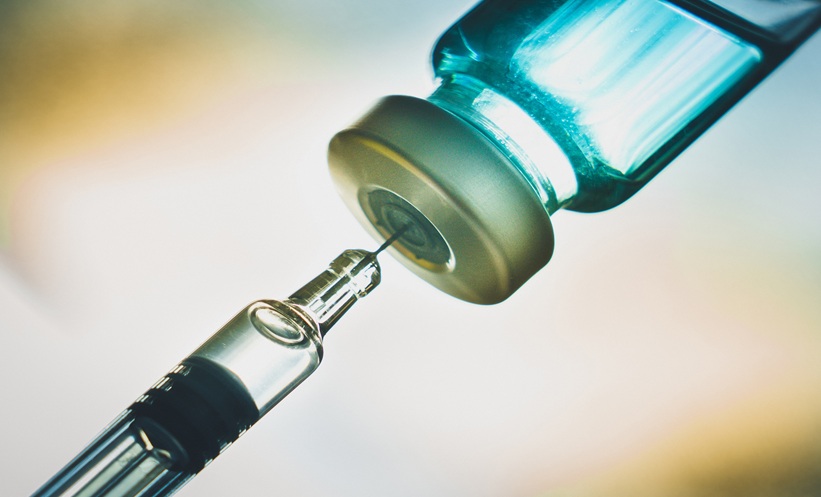Meeting Summary
This Ferring-organised Meet-The-Expert symposium at the European Society of Medical Oncology (ESMO) 2019 meeting aimed to discuss new treatment modalities in the management of high-risk, non-muscle invasive bladder cancer (NMIBC). The chairperson Prof Palou commenced the session by discussing the need for newer interventions to address the failure of bacillus Calmette–Guérin (BCG), the first-line treatment against NMIBC, in a substantial proportion of patients. Prof Palou emphasised the need to clearly define refractory disease to optimise second-line treatments, before introducing immune checkpoint inhibitors as a promising class of drug for the treatment of BCG-unresponsive NMIBC. Prof Shariat discussed a case study to define key clinical timepoints for evaluating therapeutic outcomes of BCG treatment. He further outlined factors to be considered before deciding on radical cystectomy in BCG-unresponsive NMIBC. Prof Babjuk listed some of the landmark trials conducted recently to investigate chemotherapeutic agents such as mitomycin C (MMC) and docetaxel in BCG-unresponsive patients before highlighting the role of advanced drug delivery technologies such as electromotive drug administration (EMDA), hyperthermic intravesical chemotherapy, and radiofrequency-induced thermo-chemotherapy effect (RITE) in improving the effectiveness of these agents. Prof Powles shared data from some of the trials investigating immune checkpoint inhibitors such as PURE-01, ABACUS, KEYNOTE, to underscore the importance of biomarkers in selecting appropriate treatment strategies for NMIBC.
Non-Muscle Invasive Bladder Cancer: The Need for Treatment Options to Evolve
Professor Juan Palou Redorta
Prof Palou initiated the symposium by providing epidemiological data on bladder cancers. Urothelial carcinomas comprise approximately 90% of all bladder cancers diagnosed.1 NMIBC has a high recurrence rate with a risk of invasive and metastatic progression.1,2 While BCG immunotherapy is the first-line treatment for NMIBC, approximately 30–40% of patients are nonresponsive.3 In addition, a global shortage of BCG supply has caused a significant medical and economic impact.4,5 Treatment failure of BCG does occur, and for high-risk patients frequently requires curative radical cystectomy, which is associated with increased morbidity and reduced quality of life.6-8
The history of cancer immunotherapy began with the discovery of BCG by Albert Calmette and Camille Guérin at the start of the 20th century.9,10 Further understanding of the underlying mechanism was demonstrated by Zbar et al.,11 who showed that in animal models close contact between BCG and tumour cells was required. Finally, in 1976, Morales et al.12 showed a favourable outcome following the use of intravesical BCG instillation for treatment of NMIBC.
Guidelines from the European Association of Urology (EAU) recommend BCG maintenance therapy in high-risk NMIBC, and BCG or radical cystectomy in very-high-risk NMIBC.13 Specifically, patients with intermediate-risk tumours should receive the full-dose BCG intravesical immunotherapy or instillations of chemotherapy for 1 year. Moreover, in patients with high-risk tumours, full-dose intravesical BCG for 1–3 years is indicated. In patients at the highest risk of tumour progression, immediate radical cystectomy should be considered as an alternative to BCG. Radical cystectomy is also recommended in BCG-unresponsive tumours. A meta-analysis of >15,000 patients revealed that factors such as T1 substage, associated carcinoma in situ (CIS), tumour size, and age are good indicators for early cystectomy in high-grade T1 bladder cancer.14 However, high-grade T1 bladder cancer initially challenged with BCG was not found to show any substantial difference in 5-year disease-specific patient survival in comparison with patients who underwent radical cystectomy.15 While radical surgery could avoid disease progression, prognosis in NMIBC patients who experience progression of their disease could be similar to those with primary muscle-invasive bladder cancer (MIBC), and delayed radical cystectomy undermines patient survival.16,17 The most imperative question then presents: what is the appropriate timeframe to recognise the failure of BCG and opt for radical cystectomy, especially since the likelihood of a cure decreases with advancing disease?
The key to optimal treatment of NMIBC lies in defining BCG responsiveness.18 BCG refractoriness is the persistence of T1G3/high-grade disease at 3 months despite treatment and can also characterise a tumour stage/grade progression 3 months after BCG induction or TaG3/high-grade either at 3 or 6 months, and CIS that persists at 6 months. BCG relapse is when high-grade disease recurs after achieving disease-free state following 6 months of adequate BCG. Lastly, BCG-unresponsive is when there is a failure to achieve complete response (CR) in Ta/high-grade within 6 months, or relapsing within 6–12 months of last BCG after previously attaining CR.
The focus on programmed cell death protein (PD)-1/PD-L1, an immune inhibitory receptor, in recent years serves as an example of the latest research trend towards checkpoint inhibitors in bladder cancer treatment.19 PD-1 receptors are present on cells of the immune system, including monocytes, macrophages, dendritic cells, and T cells, particularly the cytotoxic T cells. The interaction of the ligands, PD-L1 or PD-L2, with the PD-1 receptor results in turning off T-cell activation and cytokine production.
Finally, Prof Palou reiterated the need for a change in approach to the treatment of NMIBC, owing to failure of existing regimens in a proportion of the patients as well as the emergence of new treatments. These include standard chemotherapeutic agents such as paclitaxel, docetaxel, and gemcitabine; immunotherapeutic agents such as interferon-α (IFNα), mycobacterial cell wall-DNA complexing, Mycobacterium brumae, Lactobacillus casei, checkpoint inhibitors, and intravesical rAdIFNα/Syn3; and upcoming technological advances such as photodynam therapy, chemohyperthermia/microwaves, thermosensitive hydrogels, EMDA, and the gemcitabine-releasing intravesical system.20-22
Defining BCG-Unresponsive Non-Muscle Invasive Bladder Cancer: A Case Study
Professor Shahrokh Shariat
Prof Shariat’s presentation began by listing the treatment goals in high-risk NMIBC: 1) eradicate the existing tumour; 2) prevent or delay tumour recurrence; 3) prevent or delay tumour progression; and 4) prevent pan-urothelial disease.
To highlight the importance of clinical judgement in selecting an optimal interventional strategy, Prof Shariat presented the case of a 64-year-old male patient who presented with haematuria. The patient had a lifestyle risk factor associated with bladder cancer, heavy and chronic smoking, as well as the comorbid conditions hypertension and hyperlipidaemia.23,24 Ultrasound evaluation of the bladder revealed a single mass, cytology results were positive, and cystoscopy showed a single lesion on the left side with appearance of a papillary tumour of approximately 2 cm. Following a transurethral resection (TUR) and subsequent histological evaluation, the tumour was identified as a pT1 high-grade urothelial CIS, with no lymphovascular invasion, and 10% glandular variant. The tumour was also visually judged to be completely resected.
As is indicated in such cases, the patient underwent a follow-up restaging TUR to minimise the risk of understaging the NMIBC following the first TUR. Such a restaging TUR is associated with a lowered recurrence rate (50% of recurrences are at the same site)25 and improved response to intravesical BCG and MMC therapy.26 Moreover, persistent T1 disease at re-TUR carries a high risk (75% at 5 years) of progression following BCG therapy thereby justifying the use of re-TUR to identify these patients,27 even though it has been recently published that the risk of progression is 25.3%.28
The restaging TUR revealed a high-grade Ta urothelial carcinoma of the bladder without lymphovascular invasion and glandular variant similar to the first TUR. The next course of action in such a case is to initiate immunotherapy with intravesical BCG treatment since this has been known to result in initial response rates of approximately 80% for CIS and tumour-free response rates of approximately 70% for papillary disease.29 However, despite these promising results, not all patients derive benefit and some tumours could relapse over time.13,27 Three months following BCG induction, the patient showed positive cytology results and the presence of CIS on subsequent cystoscopy. Clinical data published by Lamm et al.30 has shed more light on the time-frame necessary to evaluate the effectiveness of BCG treatment and aid the choice of further courses of action. In a subset of subjects with CIS in their study, Lamm et al.30 reported a CR rate of 58% and 55% in subjects who had received a 6-week BCG treatment, either as induction or maintenance therapy, respectively. While these appear suboptimal, a further 3-week BCG treatment resulted in an increase in CR rates to 69% and 84%, respectively. Hence, the appropriate timeframe for evaluation appears to be 6 months following initiation of intravesical BCG for CIS and possible high-grade Ta.
At the 6-month evaluation, the patient had a negative cytology result and no evidence of tumour; however, at the 9-month evaluation a low-grade Ta lesion was observed with a continued negative cytology result, and at the 12-month evaluation a CIS was discovered. These findings illustrate the significance of grading Ta tumours emerging post-BCG treatment31 and diagnosing BCG-unresponsive tumours to select appropriate course of action. BCG-unresponsiveness is defined as the occurrence of 1 of 3 events: 1) MIBC is detected during follow-up; 2) a CIS or high-grade Ta is present at 3 and 6 months or a high-grade T1 is present at 3 months; or 3) a high-grade tumour appears during BCG therapy after achieving a disease-free state at 6 months.13 For such purposes, BCG-unresponsiveness also includes BCG intolerance in which severe side effects prevent further BCG instillation before completing treatment.
Based on major treatment guidelines and clinical evidences, the current standard treatment for BCG-unresponsive NMIBC is radical cystectomy because it results in a cancer-specific survival of approximately 90%, and quality of life in patients who have undergone radical cystectomy is comparable to the general population. However, this procedure also has shortcomings: it is more frequently employed than necessary, substantial morbidity and mortality are associated with the procedure, it is unsuitable for elderly and frail patients, and there exists a possible need for cosmetic interventions in parallel.8,32
Prof Shariat concluded his presentation by listing the six essential conditions that serve as ideal benchmarks while considering bladder-sparing strategies in BCG-unresponsive NMIBC patients:33 1) when they are easier and safer than radical cystectomy; 2) when they are cheaper and faster than radical cystectomy; 3) when they are clinically acceptable and with durable effectiveness; 4) when there is a low risk of progressing to invasive or metastatic disease; 5) when there is a minimal delay in receiving radical cystectomy in case of failures; or 6) when there is no increase in the risk of complications following radical cystectomy in case of failures.
Emerging Technologies in the Treatment of BCG-Unresponsive Non-Muscle Invasive Bladder Cancer
Professor Marek Babjuk
Prof Babjuk began his presentation by listing some of the trials that have investigated chemotherapeutic agents in the treatment of BCG-unresponsive NMIBC.
Several clinical studies assessing the effect of various chemotherapy agents after BCG treatment failure have been conducted. In one of the first trials comparing MMC and BCG instillation in patients with NMIBC, 19% (4/21) of subjects were disease-free at 3 years after the use of MMC as a second-line agent following BCG.34 Valrubicin, a U.S. Food and Drug Administration (FDA)-approved agent for bladder CIS, showed a CR rate of 18% at 6 months in subjects who were BCG-unresponsive or BCG-intolerant.35 A Phase II trial on intravesical gemcitabine against NMIBC following 2 prior courses of BCG showed a 47% CR at 3 months and 21% of the subjects were disease-free at 2 years.36 In another study that investigated the long-term survival outcomes in subjects receiving docetaxel for recurrent NMIBC after previous BCG treatment, 59% of the subjects reported a CR after induction therapy with docetaxel and recurrence-free survival (RFS) rates at 1 and 3-year follow-ups were 40% and 25%, respectively.37 In addition to these single-agent treatments, encouraging results have also been observed in sequential chemotherapy treatments, such as gemcitabine with docetaxel. In a study on subjects with NMIBC, two-thirds of whom were BCG-unresponsive, a sequential regimen of gemcitabine followed by docetaxel showed 1 and 2-year RFS of 49% and 34%, respectively. In addition, a recently completed Phase I trial38 showed promising results and an acceptable tolerability of intravesical cabazitaxel, gemcitabine, and cisplatin in urothelial carcinoma of the bladder.38 Moreover, a new drug delivery system for intravesical administration of a nanoparticle-based formulation containing docetaxel has also been undergoing clinical investigation.39
The encouraging results from chemotherapeutic agents against BCG-unresponsive NMIBC has led to a paradigm shift in terms of designing improved drug delivery systems for these agents. Thermo-chemotherapy, a procedure by which increased localised temperature induced by microwaves (RITE) improves the effectiveness of chemotherapeutic agents in BCG-unresponsive NMIBC, has been described in a study by Nativ et al.40 This study discovered that in 111 subjects administered MMC concomitant with bladder wall, hyperthermia (42°C ± 2°C) showed a 1 and 2-year disease-free survival (DFS) of 85% and 56%, respectively. In addition, in the subgroup of 50 BCG-unresponsive subjects with CIS, the CR at 6 months was 46.0% and the 2-year RFS was 68.9%. Results from a recent Phase II study that employed RITE showed an improvement in the cytotoxicity and drug absorption of MMS via formation of tunnelling microtubules.41 However, DFS rates between RITE and control were similar, and it was concluded that RITE might be a better second-line choice for non-CIS recurrence. A post hoc analysis of BCG-unresponsive subjects from another study which employed hyperthermic intravesical chemotherapy for intermediate and high-risk NMIBC reported that approximately 50% of subjects were disease-free at the median follow-up of 14.0 months, and the overall median DFS was 17.7 months.42 Results from a Phase II study to evaluate the efficacy of MMC delivered by EMDA as first-line salvage therapy in high-risk BCG-unresponsive NMIBC subjects showed that EMDA-MMC was potentially a safe and effective ‘bladder-sparing’ option in certain patients.
Another recent modality that is being investigated as an option in BCG-unresponsive NMIBC is intravesical IFNα gene therapy, given every 3 months. IFNα has been shown to possess several direct and indirect antitumour actions and can cause tumour cell death.43 One of the candidates to emerge is nadofaragene firadenovec (rAD-IFN/Syn3), a nonreplicating adenovirus vector-based gene therapy carrying the IFNα2b gene as well as Syn3, a novel synthetic excipient that disrupts the urothelial glycosaminoglycan layer and enhances transduction of the urothelium, resulting in local effects instead of a systemic one.44 In a Phase I study, after instillation of rAD-IFN/Syn3, the cells of the bladder wall were shown to produce and secrete IFNα2b for a period of up to 10 days.45 A subsequent Phase II open-label trial investigating 2 different doses showed an overall RFS of 35% at 1 year. In addition, the median time to high-grade recurrence was longer in the high-dose group in comparison with the low-dose group (12 months versus 4 months).46 rAD-IFN/Syn3 is currently in Phase III clinical development for the treatment of high-grade, BCG-unresponsive NMIBC, and the data will soon be released.
In summary, various technological advances in drug delivery methods hold the potential of being developed into optimal treatment regimens for BCG-unresponsive NMIBC.
Systemic Treatments: Immune Therapy in Carcinoma In Situ-T4a Bladder Cancer
Professor Thomas Powles
Prof Powles commenced his presentation by highlighting the number of immune checkpoint inhibitors that were licensed for metastatic urothelial carcinoma, including atezolizumab,47,48 nivolumab,49 pembrolizumab,50 durvalumab,51 and avelumab,52 before summarising data from some of the trials.
The open-label, Phase II, PURE-01 trial was designed to evaluate pembrolizumab, given as 3 cycles of 200 mg every 3 weeks, as a neoadjuvant immunotherapy prior to radical cystectomy in subjects with bladder carcinoma that had progressed to invade the muscle tissue.53 Results from the PURE-01 trial showed an attainment of pT0 (pathological CR) in 42% of the subjects, indicating that neoadjuvant pembrolizumab might have beneficial prognosis in subjects with MIBC tumours which were PD-L1-positive and had a high tumour mutation burden. Prof Powles further highlighted the significance of biomarkers in predicting response rates; the proportion of the subjects in the PURE-01 trial with DNA damage response or RB1 genomic alterations and achieving pT0 was 60%. Moreover, the proportion of the subjects with DNA damage response or RB1 genomic alterations, a PD-L1 combined positive score ≥20%, and pT0 achievement was 90%.54
The Phase II ABACUS trial was designed to evaluate atezolizumab, two cycles of 1,200 mg every 3 weeks were given as a neoadjuvant treatment prior to cystectomy in subjects with cT2-4aN0M0 MIBC who were ineligible for cisplatin treatment.55 Overall pathologic (p)CR rate was 29%; however, PD-L1-positive subjects had a higher pCR rate (40%) in comparison to PD-L1-negative subjects (16%). The results could be attributed to a higher expression of PD-L1, as well as a CD8-inflamed phenotype in MIBC, in comparison to metastatic bladder cancer.56,57
Another Phase Ib/II trial investigating neoadjuvant pembrolizumab in combination with chemotherapy for locally advanced urothelial cancer58 showed an RFS of 70% and a disease-specific survival of 90% at 18 months.
There are also updated interim results from the Phase II KEYNOTE-057 trial investigating pembrolizumab for subjects with high-risk BCG-unresponsive NMIBC.59 The CR rate in the cohort of subjects who had CIS with papillary disease was reportedly 40.2%, with none of the subjects progressing to T2. In addition, median CR was 12.7 months, and 75% and 53% of subjects had a CR duration of ≥6 months and ≥9 months, respectively.
Furthermore, two new trials are currently ongoing: the Phase III NIAGARA trial evaluating durvalumab following neoadjuvant chemotherapy, and the POTOMAC trial evaluating durvalumab in combination with BCG in BCG-naïve NMIBC subjects.
Prof Powles summarised his presentation by indicating multiple mechanisms of resistance in metastatic disease which could result in treatment failure. This further highlights the significance of biomarkers in optimising treatment and predicting response rates, and the need for studies in BCG-naïve disease to identify newer therapeutic strategies in NMIBC.








